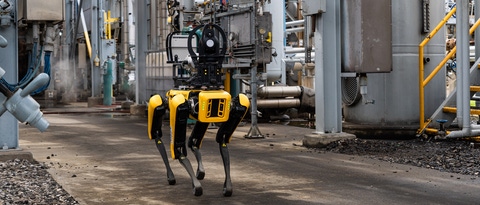Factbook
Steering Concept
We have firmly anchored our goal of achieving profitable growth while creating value for society and our shareholders in our strategy. For this reason, both financial and sustainability-related indicators are an integral part of our steering system. With our Differentiated Steering approach, we aim to increase the competitiveness of our business units and thus the profitability of the BASF Group.
Steering concept of the BASF Group
At the beginning of 2024, we introduced a Differentiated Steering concept, which is reported at the segment level. The goal is to empower our business units through this approach. We also want to create a clearer distinction between short- and medium-term steering. Key criteria in the selection of industry-specific financial steering indicators are the respective strategic direction of the business, the role of the business in BASF’s portfolio and the contribution of the business to achieving corporate targets. In addition, we are benchmarking our performance even more closely against that of our competitors.
As part of this, we have established two new most important financial key performance indicators for the BASF Group’s steering. Short-term influencing factors, such as the development of earnings or current operating assets, are controlled directly via two indicators:
- Income from operations before depreciation, amortization and special items (EBITDA before special items)
- Free cash flow
Return on capital employed (ROCE) is significantly influenced by strategic decisions such as acquisitions, divestitures and investments. It remains a medium-term key financial target for the BASF Group. This is reflected in our ROCE target of around 10% in 2028. It emphasizes the importance of managing our return on capital employed over time.
Scope 1 and 2 CO2 emissions remain the most important sustainability-related key performance indicator at Group level. We see sustainability as a decisive factor for our long-term business success.
As part of the “Winning Ways” strategy and the clear distinction between core and standalone businesses, the steering concept for the segments was adjusted in the second half of 2024. Accordingly, all segments are now measured by their absolute contribution to EBITDA before special items. This is an earnings indicator that describes the operational performance independent of age-related depreciation and amortization of assets and any impairment or reversal of impairment. The key figure is therefore particularly suitable for indicating the profitability of a business and for comparisons with businesses in similar sectors.
To manage cash flow at segment level, we use a specific key figure, segment cash flow, which includes the elements of the free cash flow that can be managed by the operating divisions. This key performance indicator also applies to all segments.
Value-based management throughout the company
The target agreement process is an important part of our value-based management. Since 2024, variable compensation for senior executives has been based on targets derived from the key performance indicators for the steering of the respective business unit and the BASF Group. We plan to introduce this differentiated bonus system for all other employees over the course of 2025.
This underscores the further increased autonomy of the divisions as part of the “Winning Ways” strategy and their accountability for business success.
Key figures in reporting
In line with the new steering concept, in financial reporting we analyze, comment on and forecast the most important key performance indicators EBITDA before special items and free cash flow for the BASF Group, and EBITDA before special items and segment cash flow for the segments.
Capital expenditures that have a direct impact on ROCE serve as an additional key performance indicator for the BASF Group. Capital expenditures are used to manage capital employed in the BASF Group. These comprise additions to property, plant and equipment excluding additions from acquisitions, IT investments and restoration obligations as well as right-of-use assets arising from leases.
We will continue to forecast cash flows from operating activities and payments made for property, plant and equipment and intangible assets as key factors for free cash flow.
In addition, we continue to analyze and comment on sales at Group and segment level, but we do not forecast them.
